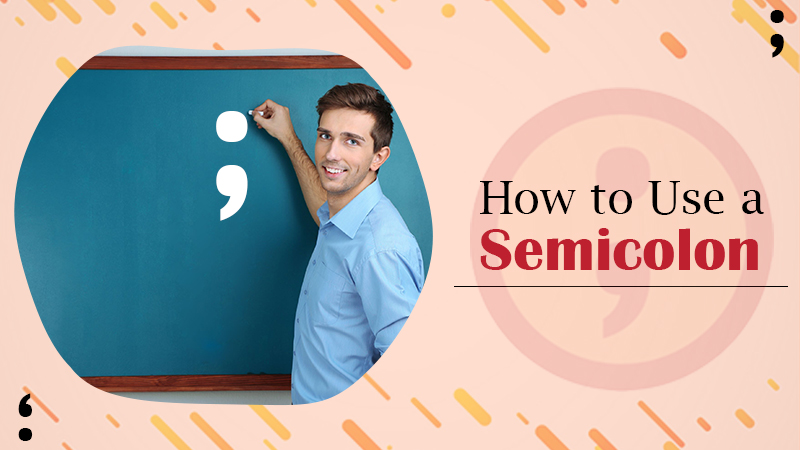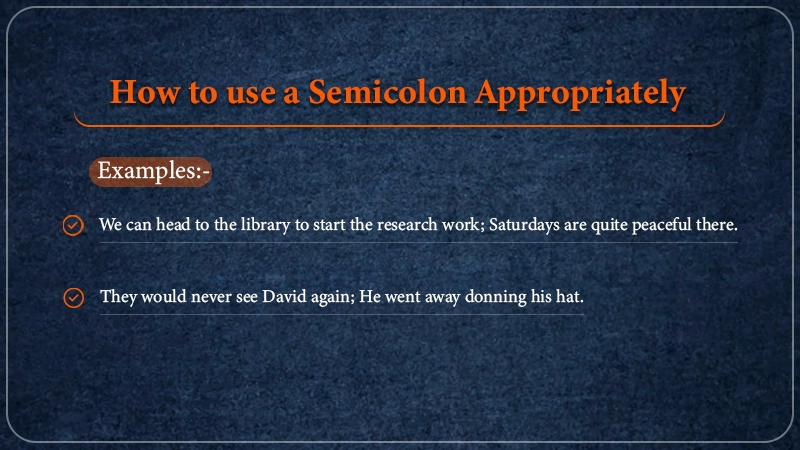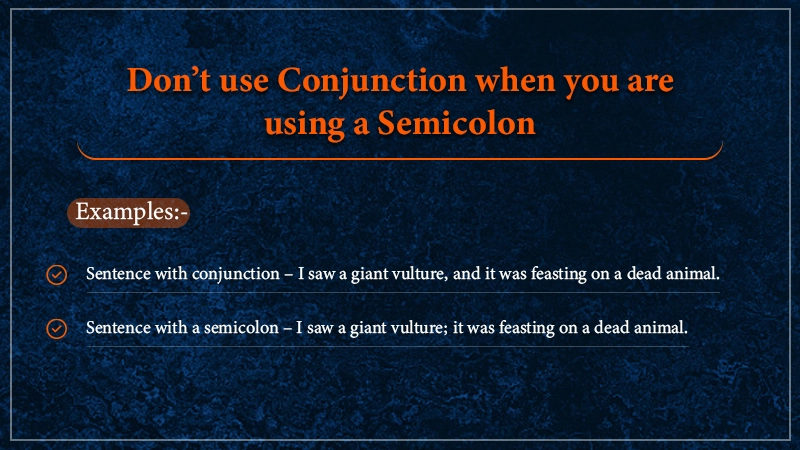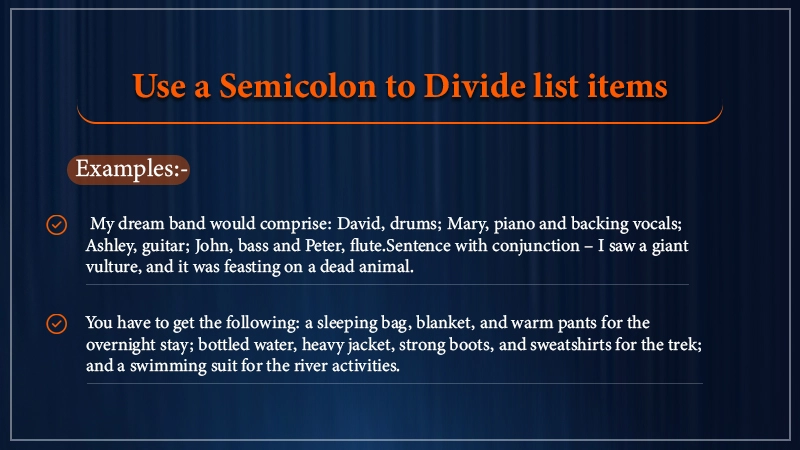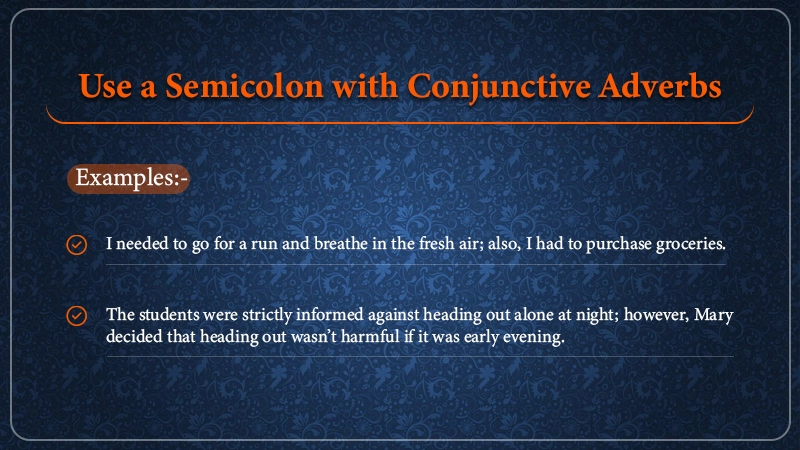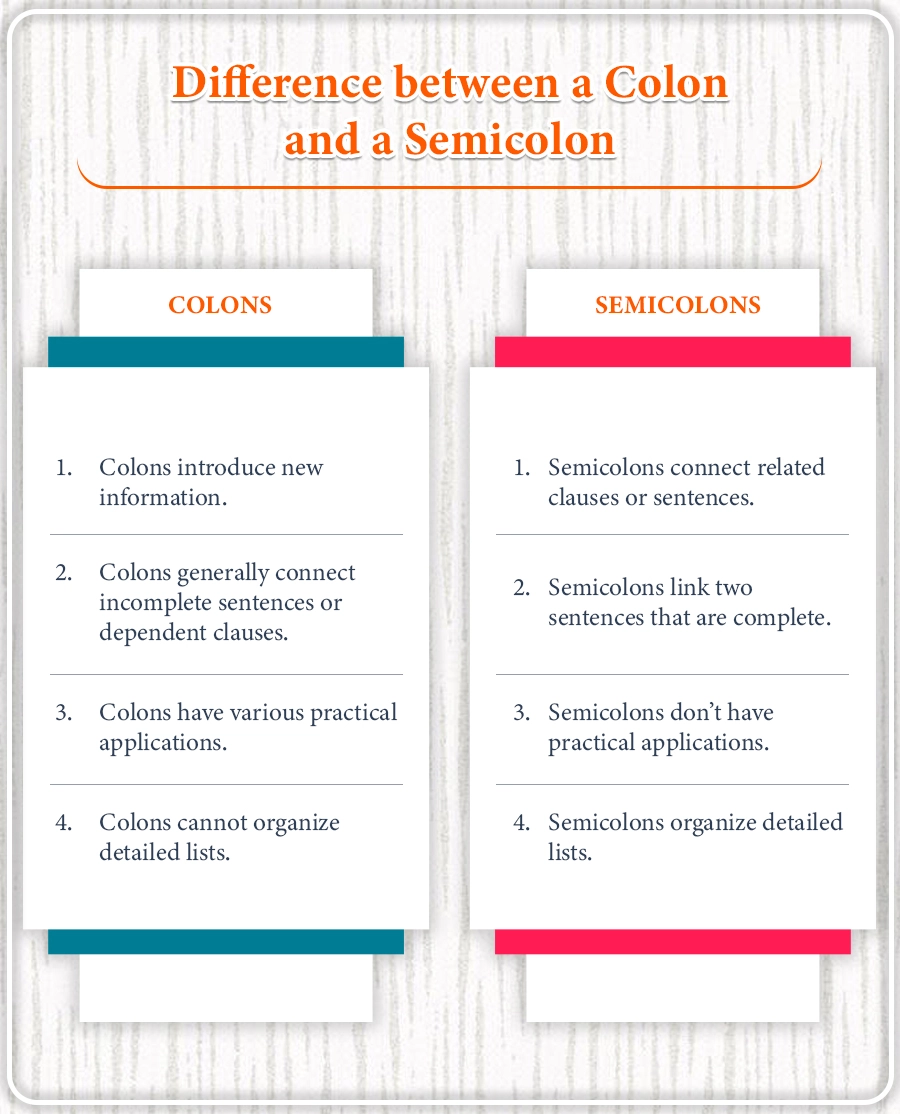A semicolon is an effective tool in academic and non-fiction writing. However, many people confuse between colons and semicolons. They use them interchangeably, which is not correct. Both have a distinct purpose, and its essential for every writer to understand it. Semicolons allow you to connect related ideas and views with a style mark that’s stronger than a comma. When you know how to use a semicolon, it’s easy for you to make your content or writing feel more sophisticated. There’s much to keep in mind while using this punctuation mark. This article will help you understand the usage of a semicolon to communicate better.
What Does a Semicolon Mean?
To know how to use semicolon, it’s vital to first understand what it is. It’s a punctuation mark which is denoted as; You should use it for joining two related independent clauses without using a comma or coordinating conjunction. The semicolon is apt for making a seamless connection between two associated ideas.
Through it, you can also avoid committing a grammatical error, called a comma splice, in which a comma separates two independent clauses. You can substitute a comma, em dash, hyphen, and parenthesis with a semicolon to connect two sentences representing related ideas.
How to Use a Semicolon Appropriately?
Most commonly, a semicolon joins two separate clauses without a conjunction. Several people wonder if they should use a capital letter after this punctuation mark. Its answer is no. You should use a capital letter only if the word is a proper noun. Read these two semicolon use examples below to understand this concept better.
Semicolons are stronger than a comma. But do not use them instead of a period (.). Below are some rules about how to use a semicolon correctly. Please take note of them so that you make use of it appropriately.
1. Use semicolons to join closely associated independent clauses
The set of words that come prior to the semicolon must always form a full sentence on their own. Similarly, those you write post semicolons must also form a complete sentence. These two sentences that come before and after the semicolon must share a logical connection. To better gauge this rule, you can go through the semicolon use examples below.
You can observe that the letter after the semicolon is not in the capital. The examples above comprise two grammatically correct and complete sentences joined together.
2. Don’t use conjunction when you are using a semicolon
Both semicolons and conjunctions are used to connect independent clauses. So, there’s no need to use a semicolon in a sentence that has conjunction. It implies that you should use a semicolon instead of conjunction like ‘but,’ ‘and,’ ‘or.’ Read these two examples to clarify this rule.
To not commit a comma slice, you require a comma with something after it. It can be a conjunction or a period. It will turn that comma into a semicolon. You can also use a semicolon to show a contrast. Thus, apart from linking two related views and replacing conjunction between them, you can also use them to showcase contradictory viewpoints. It’s because two opposing ideas are also related to a single concept or argument.
3. Use a semicolon to divide list items
You can also use a semicolon to divide the products of a list if they are long or have internal punctuation. It enables the reads to monitor divisions among the different items. Go through these examples to know when to use a semicolon to divide list items.
In the last example, you can observe that a colon introduces your list, and the semicolon signals the grouped portions of that list.
4. Use a semicolon with conjunctive adverbs
When a sentence has a conjunctive adverb connecting two independent clauses, you must use a semicolon. Some conjunctive adverbs are nevertheless, moreover, therefore, however, likewise, finally, then, and consequently.
The conjunctive adverb rule is identical to some extent to the conjunction rule. In both of them, you can see that there are two independent clauses that can be independent sentences.
What’s the Difference Between a Colon and a Semicolon?
Now that you know how to use a semicolon, it’s essential to know how they are different from a colon. Colons introduce a list of some things, an explanation, or a quote. On the other hand, semicolons, as mentioned before in this article, separate significant components of a sentence. It is the chief difference between both these punctuation marks. Only in some very rare cases can they be used interchangeably. Here are significant differences between them you should take note of.
- Colons introduce new information – This punctuation mark indicates the arrival of something. In contrast, semicolons connect related clauses or sentences. An example of a sentence having a colon is I have a single question: have you gone crazy? An example of a sentence having a semicolon is Ashely went to the store today; she purchased many items.
- Semicolons link two sentences that are complete. It is a crucial difference that you shouldn’t ignore. Semicolons link independent clauses. In contrast, colons generally connect incomplete sentences or dependent clauses.
- Semicolons don’t have practical applications. They generally do not have any practical use. On the other hand, colons have various practical applications. A book’s subtitle is written using a colon. You also use it to demonstrate a numerical ratio or time.
- Semicolons organize detailed lists. This rule must be clear to you by now. It would be best to use semicolons to make complex lists clear to the reader. Use them in a list where there’s a mention of several items. It cannot be done with the help of colons.
If you find the rules for using semicolons a bit complicated, don’t worry. There’s a simple trick you can employ for using semicolons correctly. Use it to separate standalone sentences. Keep in mind that this punctuation mark communicates a relationship. The two standalone sentences on either side of it should not be entirely unrelated. You can also check if a full stop would work in its place. This way, you’ll be able to use semicolons correctly.
Final Words
If you want to know how to use a semicolon then it is quite simple, the key to employing a semicolon is to have separate sentences on either side of it. A semicolon is used to establish a connection. The two phrases should not be wholly unconnected, or the punctuation mark should be used appropriately, as illustrated in the example below.
You can also seek the assistance of professional content writing services to get grammatically correct content that perfectly communicates the message you want to convey.
